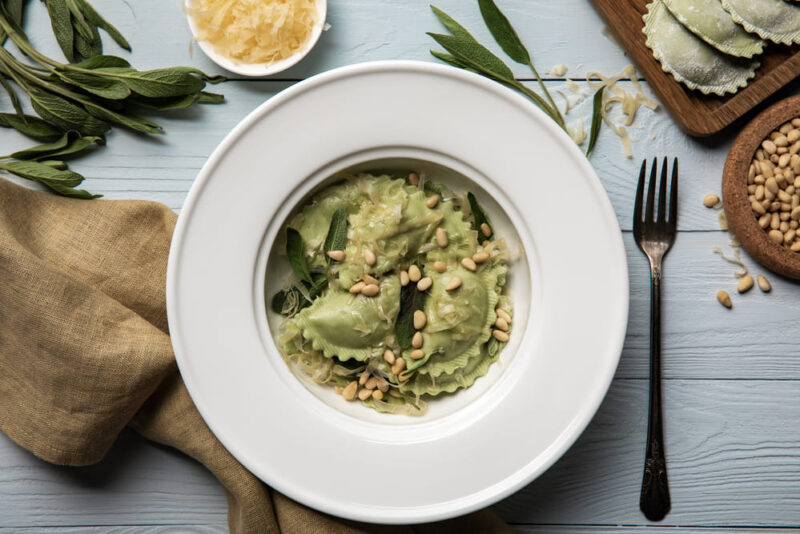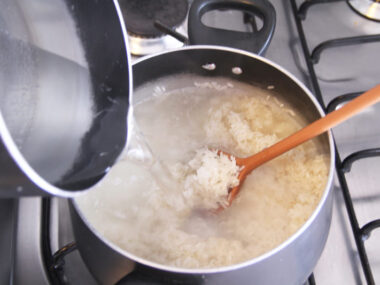Sage is a perennial herb that belongs to the Mediterranean region and originated there. It can be easily identified because of its softness. Its leaves are of a grayish-green color which makes it highly distinctive from other herbs. Sage is a member of the mint family.
Sage is available in a lot of forms and is added to various dishes to fulfill various purposes. We’ll be elaborating on the same in this article, so stay hooked!
What Is Sage?
The other name for sage is Salvia Officinalis comes from the mint family and it is a famous herb that is used in many dishes.
It can be easily recognized by its green and gray leaves and the softness of the herb. Sage has a good flavor that resembles an earthy and sweet taste.
It tastes best when added to heavy dishes like stuffing, winter squash recipes, and pasta dishes that are full of cream. Additionally, you can also add it to sausages and cured meats. It enhances the flavor of the dish and gives it a finishing touch.
A sage is available in manydifferent forms in the market. It is known by a variety of names such as true sage, culinary sage, kitchen sage, etc.
How To Cook With Sage?
Sage has a rich aroma and a strong flavor. Hence, it is recommended that one should add sage early in the cooking procedure.
It shouldn’t be added at the end of the cooking process because it has a strong smell which can make the dish less impressive.
Fried sage can be put into a dish to increase its flavor at the end of the cooking process. To add herbaceousness to pastries, sauces, etc one can add sage to it. For an instant hit of a herbal flavor, you should consider adding fresh sage leaves to teas and cocktails.
Sage is used to fulfilling distinct purposes. In Italy, sage makes a good addition to Italian sauces. It’s also added to pasta dishes to increase the aroma.
In different countries, sage fulfills a different purpose. It is also used in France by chefs. People add sage to sausage fillings and pair it with bay leaf etc. In Canada and the US, sage is added to Thanksgiving turkey dishes.
The most common pairing which is used in almost all the dishes which constitute sage is sage and browned butter. It is one of the best combinations because it takes both the taste and aroma of the dish to the next level.
What Is Sage Used For In Cooking?
Sage is known for its rich flavor and aroma. It is added to a dish to increase its flavor and make it rich in aroma. It works best when it is added to a dish at the very start, this way it gets heated up and releases all the good qualities.
Sage adds a rich aroma to the dish. It is used for different purposes in different countries. It is a beneficial herb and adds a rich smell and flavor to the dish.
What Flavor Is Similar To Sage?
Sage has a herbal taste to it which is earthy, and slightly peppery. It also consists of tiny hints of eucalyptus, mint, and lemon.
Sage is believed to work better in heavier dishes with rich ingredients that hold themselves up against the strong flavor of the herb. But when you run out of sage, what can you use to get the same flavor?
You can substitute either thyme or marjoram. These account for the same flavor and taste. Many herbs can act as a substitute for sage.
Other herbs like sweet basil, mint, rosemary, oregano, winter, and summer savory as well as poultry seasoning can be used instead of sage.
When To Use Sage In Cooking?
Sage has a pungent smell and flavor and due to this fact, we suggest that you add the herb early in the cooking process.
This will ensure that the sage gets perfectly mixed with the dish adding a richer taste. Frying it at the start of the cooking process will mellow the flavor of the herb.
When fried sage is added to a dish, it increases the dish’s efficacy and makes it even more desirable and impressive.
Sage makes for the perfect addition to dishes that consist of pasta, chicken, and even vegetable recipes.
How to Cook Sage Leaves?
Sage is commonly used in a lot of dishes and is used in the seasoning of poultry and sausage.
The most probable time that you might have tasted sage is Thanksgiving. The most common herb which is used in Thanksgiving dishes is sage, due to its rich aroma and flavor.
Sage leaves taste the best when fried and used as a garnish on side dishes. For frying, you should, first of all, add some amount of butter to a pan and heat it.
After the butter starts to brown, add about 10-12 sage leaves and fry them. Fry them for at least a minute. Add a bit of salt to it at the end and mix it well.
Now, your sage leaves are fit to use. It will give an impressive touch to your dish. Add it to any dish you wish to garnish!
What Can I Substitute Sage With?
Sage is a herb that can make your dish impressive and tastier. It makes the dish rich in aroma and flavor. However, if you don’t have this herb which comes from the Mediterranean region you can substitute other herbs for the same.
Herbs like marjoram which belong to the mint family can be substituted successfully for sage. Marjoram closely resembles the flavor and the smell of sage.
Thyme, rosemary, Italian seasoning, tarragon, basil, bay leaf, savory, poultry seasoning, and oregano can successfully replace sage as well.
Related Questions
What Does Sage Taste Like?
Sage has a herbal aroma which makes it a great addition to many different dishes. It has a slightly peppery taste in addition to an earthy flavor with hints of eucalyptus, lemon, and mint.
The pungent smell and rich aroma make it a great garnish. Sage comes from the Mediterranean region and is one of the best herbs for garnishing purposes.
Does Sage Taste Like Rosemary?
Although the two do have slight differences, rosemary can replace sage and vice versa.
Rosemary and sage can be considered good friends as they go well together. However, there is a slight change in the taste of the two because rosemary is much stronger and pinier than sage.



